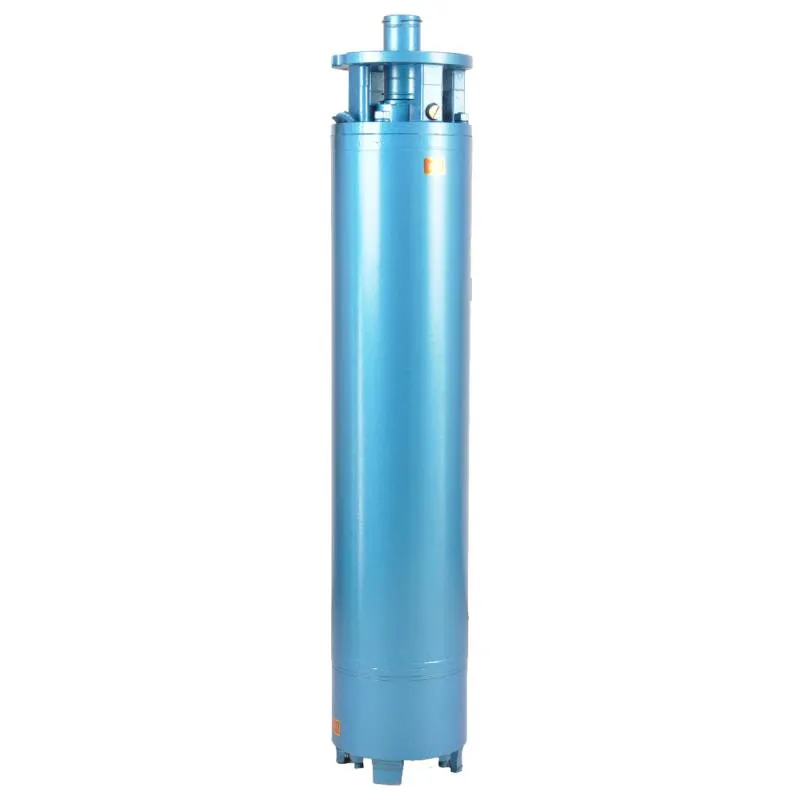Nov . 10, 2024 18:47 Back to list
Guidelines for Installing Submersible Well Pumps Efficiently and Safely
Submersible Well Pump Installation A Comprehensive Guide
Submersible well pumps are crucial components in water extraction systems, designed to function underwater. These pumps are typically used in residential and agricultural applications to draw water from deep wells and are favored for their efficiency, durability, and capacity to lift water over considerable distances. Installing a submersible well pump might seem daunting, but with the right tools, materials, and guidelines, the process can be straightforward. This article provides a comprehensive guide to help you successfully install a submersible well pump.
Understanding Submersible Well Pumps
Before diving into the installation process, it's essential to understand how submersible well pumps operate. These pumps consist of a hermetically sealed motor, a pump body, and an impeller. The motor is located at the bottom of the pump and is designed to be submerged, while the pump body pushes water upward through a discharge pipe to the surface. The impeller plays a variety of roles in the pumping process, including generating pressure and facilitating water flow through the pump.
Tools and Materials Required
To install a submersible well pump, you will need several tools and materials, including
1. Submersible Well Pump Ensure the pump is correctly rated for your well depth and water supply needs. 2. Electrical Wiring Sufficient gauge wire for connecting the pump to the power supply. 3. PVC or Steel Pipe For the pump discharge pipe to carry water to the surface. 4. Pump Cable A specialized cable with connectors for securing the pump and monitoring equipment. 5. Well Cap To cover the top of the well and prevent contamination. 6. Safety Gear Gloves, safety goggles, and a hard hat should always be worn. 7. Tools Wrenches, pliers, a pipe cutter, and a wrench to tighten fittings.
Step-by-Step Installation Process
1. Preparation Before you start, ensure that the well is clean and clear of debris. Disconnect any existing pump system if applicable. Familiarize yourself with the well’s design and depth.
2. Measuring Depth Measure the depth of the well. This is crucial in determining the length of piping and wiring required. It also helps ensure the pump can operate efficiently at the specific depth without any hindrance.
submersible well pump installation

3. Installing the Pump - Attach the Pipe Begin by attaching the discharge pipe to the pump. Depending on the pump model, this involves screwing on the fitting or using a welded joint. - Seal Connections Apply Teflon tape or sealant to prevent leaks, especially where pipes connect to the pump and discharge.
4. Lowering the Pump Carefully lower the pump into the well. It is advisable to have someone assist you in this process to ensure it doesn’t tilt or get caught on the sides of the well. Use a rope or chain attached to the pump to guide it downwards.
5. Electrical Connections Once the pump is positioned at the desired depth, connect the pump’s wiring to the power supply following local electrical codes. Ensure all connections are sealed and protected from moisture to prevent electrical hazards.
6. Testing With the pump in place and connected, it's time to test its operation. Turn on the power and monitor the pump for proper function, listening for unusual noises and checking for leaks.
7. Finalize Installation Once tested, secure the pump with a well cap to prevent any contaminants from entering the well. Additionally, make sure all piping is properly insulated to prevent freezing in cold climates.
Maintenance Tips
Post-installation, regular maintenance is key to ensuring the longevity and efficiency of your submersible well pump. Monitor the pump periodically for signs of wear and tear, such as unusual noises, vibrations, or decreased water output. Schedule professional inspections annually to catch potential issues before they lead to significant failures.
Conclusion
Installing a submersible well pump requires careful planning, the right tools, and attention to detail. By following this comprehensive guide, you can ensure that your pump functions efficiently and effectively, providing you with a reliable water source for your needs. With proper installation and maintenance, your submersible well pump can serve you well for many years to come.
-
Submersible Water Pump: The Efficient 'Power Pioneer' of the Underwater World
NewsJul.01,2025
-
Submersible Pond Pump: The Hidden Guardian of Water Landscape Ecology
NewsJul.01,2025
-
Stainless Well Pump: A Reliable and Durable Pumping Main Force
NewsJul.01,2025
-
Stainless Steel Submersible Pump: An Efficient and Versatile Tool for Underwater Operations
NewsJul.01,2025
-
Deep Well Submersible Pump: An Efficient 'Sucker' of Groundwater Sources
NewsJul.01,2025
-
Deep Water Well Pump: An Efficient 'Sucker' of Groundwater Sources
NewsJul.01,2025
-
 Submersible Water Pump: The Efficient 'Power Pioneer' of the Underwater WorldIn the field of hydraulic equipment, the Submersible Water Pump has become the core equipment for underwater operations and water resource transportation due to its unique design and excellent performance.Detail
Submersible Water Pump: The Efficient 'Power Pioneer' of the Underwater WorldIn the field of hydraulic equipment, the Submersible Water Pump has become the core equipment for underwater operations and water resource transportation due to its unique design and excellent performance.Detail -
 Submersible Pond Pump: The Hidden Guardian of Water Landscape EcologyIn courtyard landscapes, ecological ponds, and even small-scale water conservancy projects, there is a silent yet indispensable equipment - the Submersible Pond Pump.Detail
Submersible Pond Pump: The Hidden Guardian of Water Landscape EcologyIn courtyard landscapes, ecological ponds, and even small-scale water conservancy projects, there is a silent yet indispensable equipment - the Submersible Pond Pump.Detail -
 Stainless Well Pump: A Reliable and Durable Pumping Main ForceIn the field of water resource transportation, Stainless Well Pump has become the core equipment for various pumping scenarios with its excellent performance and reliable quality.Detail
Stainless Well Pump: A Reliable and Durable Pumping Main ForceIn the field of water resource transportation, Stainless Well Pump has become the core equipment for various pumping scenarios with its excellent performance and reliable quality.Detail
